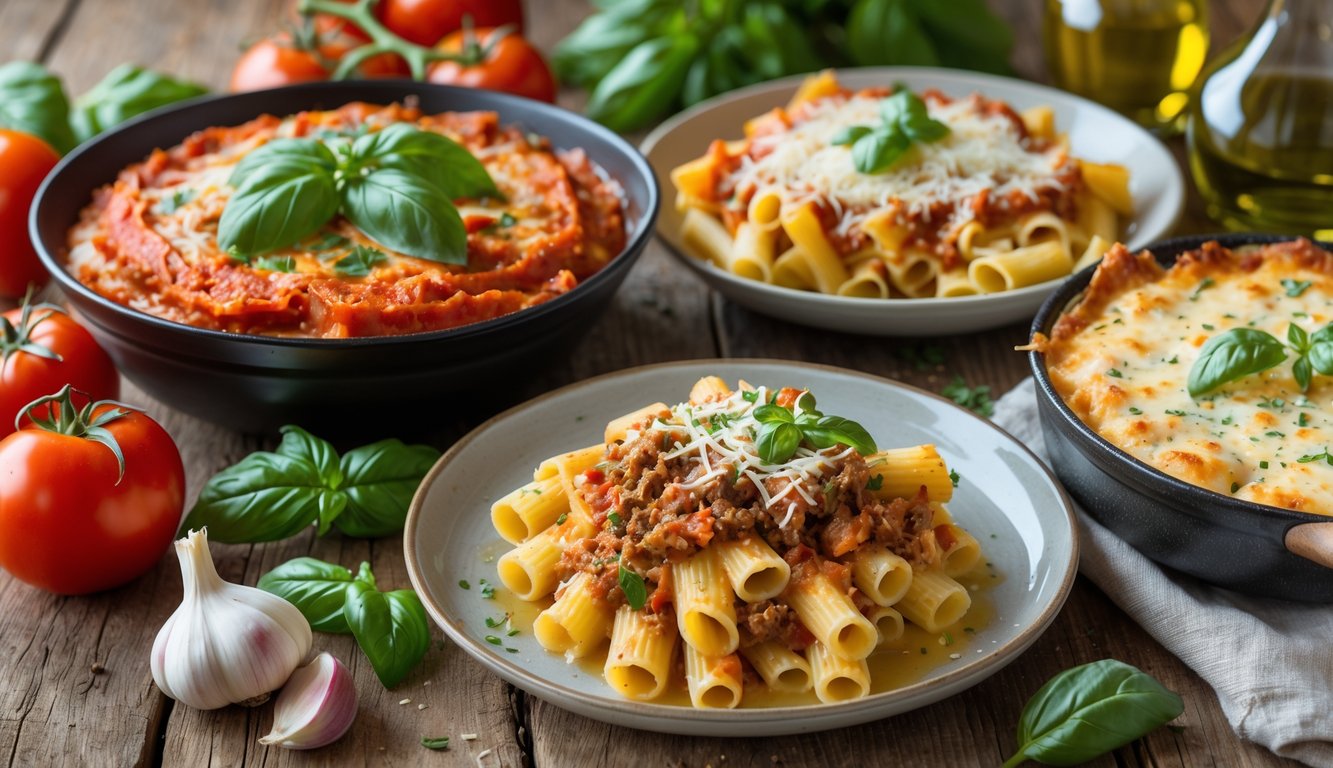
Meat and Vegetable Medleys in Sicilian Pasta
If I see another “modern” Sicilian pasta bake that skips eggplant or pretends celery is optional, I’m leaving. The whole point is the messy, honest mix—meat, vegetables, old-school tricks. Why do chefs keep screwing with it?
Ground Beef, Pork, and Veal
If you’re making pasta timballo with anelletti and skip the ground beef, pork, or veal, just stop. In Palermo, they go heavy—equal parts, sometimes—for a ragù that actually tastes like something. I ate at a spot in Catania that used only beef. It was… fine. But flat. Nonna Giuseppina swears veal brings sweetness, and after ten versions in a week (don’t ask), yeah, I believe her.
Lately, people use turkey or chicken. I get it, summer, lighter, whatever, but call it what it is. Real ragù? Brown each meat separately. More veal? Softer. More pork? Fattier. More beef? Chewier. An Osteria Ballarò guy told me their secret: simmer forever, sneak in nutmeg. Texture matters—crumbly, not dry. Skip that and you’re just eating mush.
Eggplant and Fried Eggplant
Eggplant is chaos. You have to salt and drain it or it’ll ruin everything. Americans undercook it, or worse, skip the frying. No, tossing raw cubes in isn’t enough. For baked anelletti, you want thin slices, dusted with flour, fried till they’re almost armored. Smoky, sweet, and yeah, I’m stubborn about this.
Some people toss in half-cooked cubes. Disaster. Grilled is fine, but frying? That’s the texture you want against soft pasta. Primo Sale cheese plus fried eggplant? That’s why you pay $18 in Brooklyn, even if it’s a rip-off. I actually called out a restaurant for sautéing instead of frying. Burnt, oily edges with ragù—there’s nothing better. Skip eggplant? Sorry, that’s not Sicilian, that’s just lazy.
Carrots, Peas, and Celery
If your baked pasta doesn’t have carrots, peas, and celery, what even is it? Not Sicilian, that’s for sure. In Palermo, you dice all three, sauté, then add to the sauce. They melt in, giving sweetness and crunch—subtle, but you notice when they’re missing.
Peas—fresh is best, but frozen’s okay. Blanch them, don’t let them turn to mush. Carrots and celery with bay leaves? Yes, or a Sicilian will steal your spoon (happened to me). Too much celery? Bitter mess. Too many carrots? Baby food. I did a side-by-side once and the no-veg batch was so boring—like eating leftovers you forgot in the fridge.
If you’re skipping these, don’t call it Sicilian baked pasta. Or do, but I’m not touching it. The flavor’s in the details, especially after all that cheese and heat.
Signature Sauces: Tomato, Ragu, and Beyond

Missing sauce? That’s sacrilege in Sicily. But nobody explains why some pasta bakes drown in tomato and others show up with a ragu so thick you could use it as grout. Every kitchen lines up the same cans—tomato paste, whole tomatoes, puree—but every chef has their own “secret” order. Does it matter? I don’t know anymore.
Traditional Tomato Sauce
Forget the jarred stuff. Sicilian tomato sauce is loud, acidic, and not trying to be polite. Some chef in Palermo told me the secret is all in the tomato’s pH. Basil and garlic fight for the spotlight. In Catania, if you don’t peel your tomatoes, people get annoyed and start picking skins out of their teeth.
Neapolitan sugo finto is just tomatoes and pasta, no meat, but somehow tastes like it’s hiding beef in there. Still don’t get it. If you serve watery sauce on baked anelletti, you’ll get complaints. Some cooks add sugar to tame the acid, others say that’s a crime.
Here’s a table nobody needs, but whatever—these are the main sauce ingredients I keep seeing:
| Ingredient | Typical Function | Relentlessly Debated Add-ons |
|---|---|---|
| Italian Tomatoes | Base, acidity, color | Cherry, plum, San Marzano |
| Olive Oil | Fat, flavor | Garlic (whole or crushed?) |
| Basil & Herbs | Aromatics | Oregano, sometimes mint |
| Onion | Sweetness, body | Some leave it out entirely |
Hearty Ragu
Ragu in Sicily is a mess. Sometimes pork, sometimes beef, sometimes both. It’s not just “meat sauce”—it’s a day-long project. I asked a chef about simmer time—she shrugged, said two hours minimum, but her mom starts at sunrise. “Just in case.” Sure.
Every town does it differently. West Sicily? They splash in Nero d’Avola wine. Other places skip wine, toss in pork rind. Saw a place near Agrigento brag about “all beef” ragu—tasted like the cow showed up late and tired. Tomato paste is the trick: too much, it’s glue; too little, it’s soup. Ragu needs sturdy pasta—broken lasagna, rigatoni—otherwise it just slides off.
And don’t even get me started on the North-South rivalry. Emilia-Romagna folks roll their eyes at Sicilian ragu, and vice versa.
Tomato Paste and Puree in Sicilian Recipes
Everyone in Sicily thinks their tomato paste is “the real one.” I didn’t realize tomato puree was such a drama magnet until I saw those giant “forno only” cans in Messina. Paste is weirdly metallic if you taste it straight. Some cooks fry it in oil to “wake it up.” Puree is softer, stretches the sauce, keeps the pasta from turning into a brick. Nobody agrees on how much of each. There’s this idea that using both makes the sauce cling better—maybe, maybe not.
If you try to cheat with just canned sauce, someone’s grandma will appear and declare your food ruined. It’s not, but you’ll never convince her otherwise.



